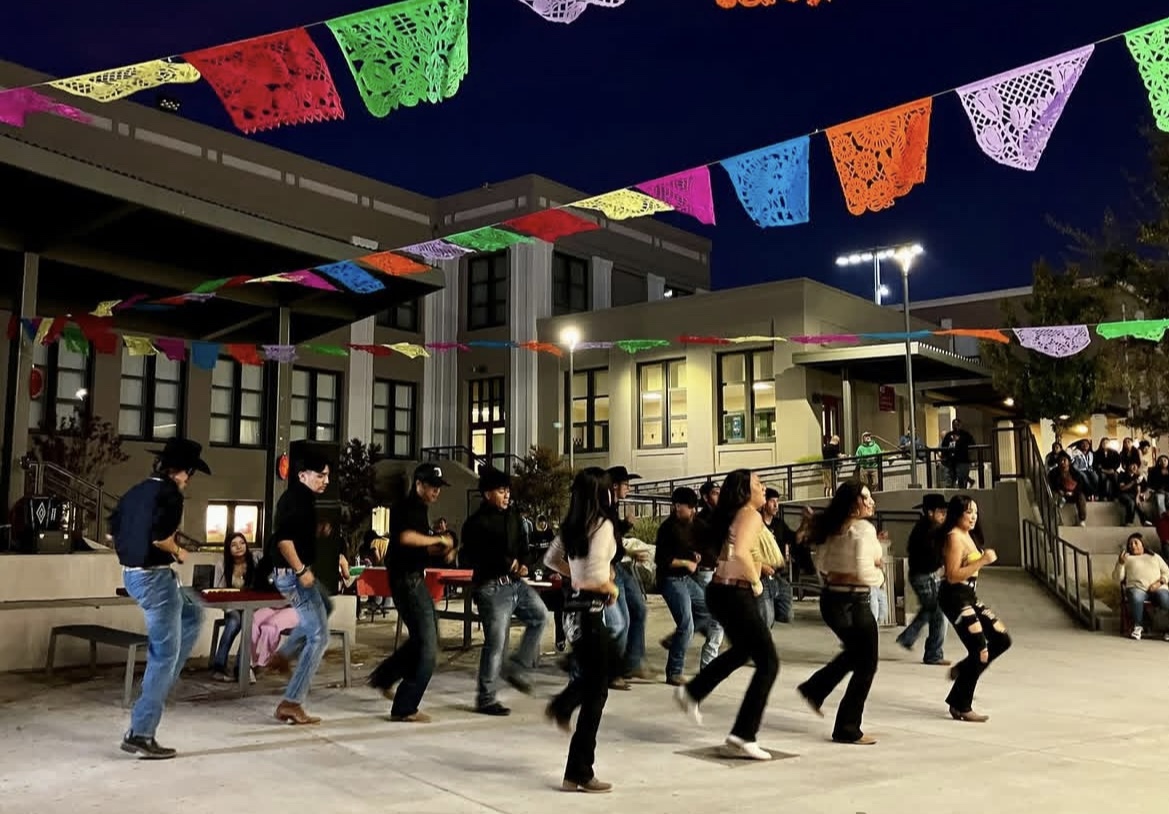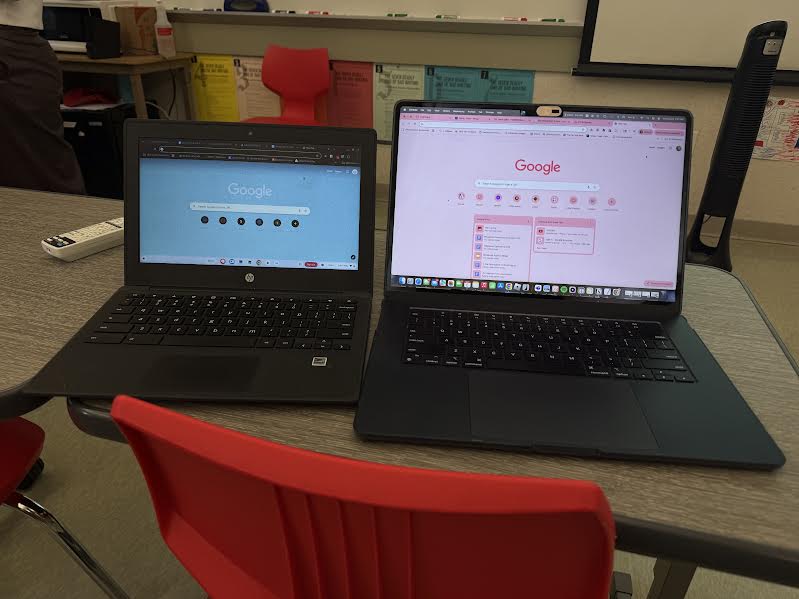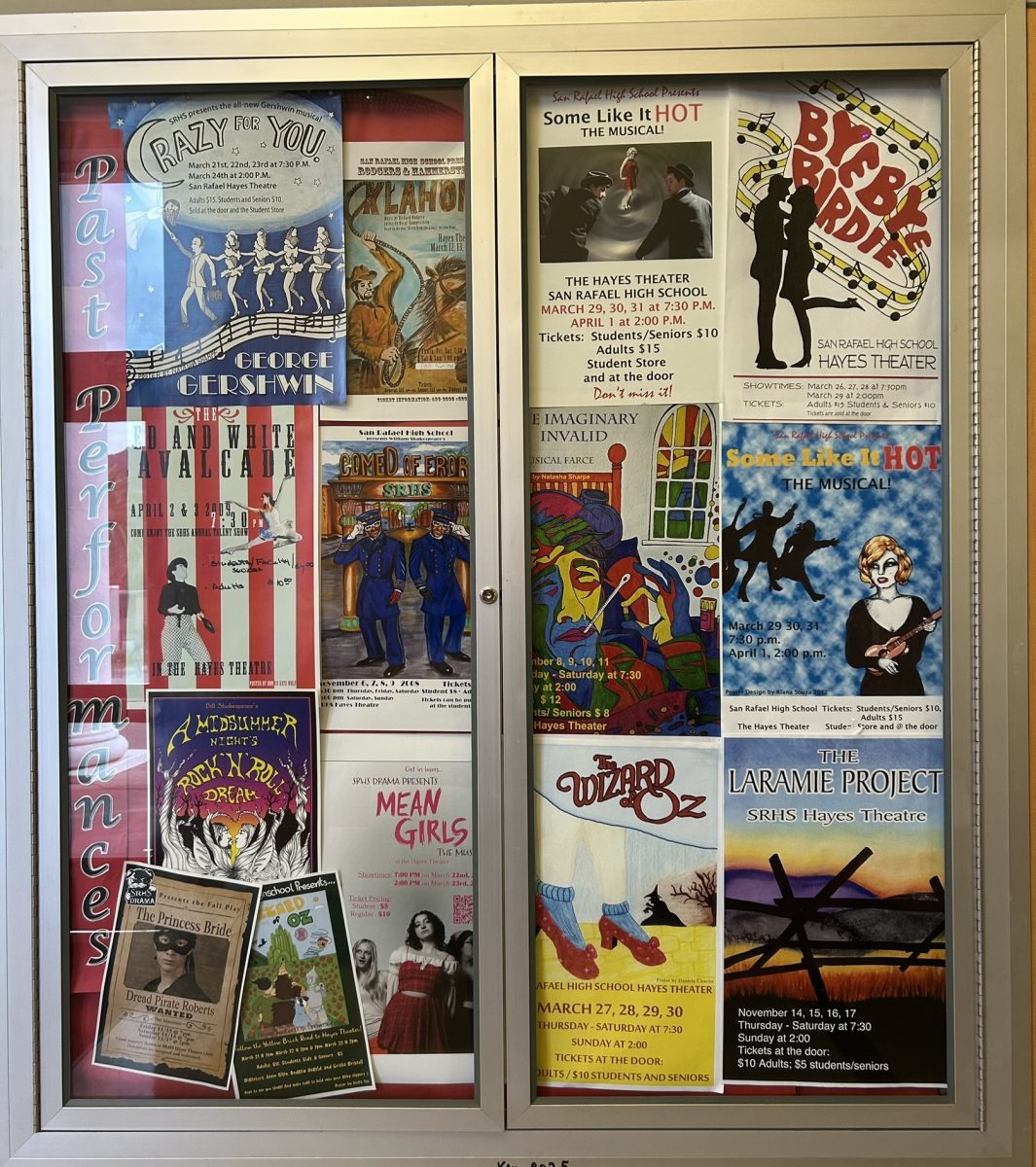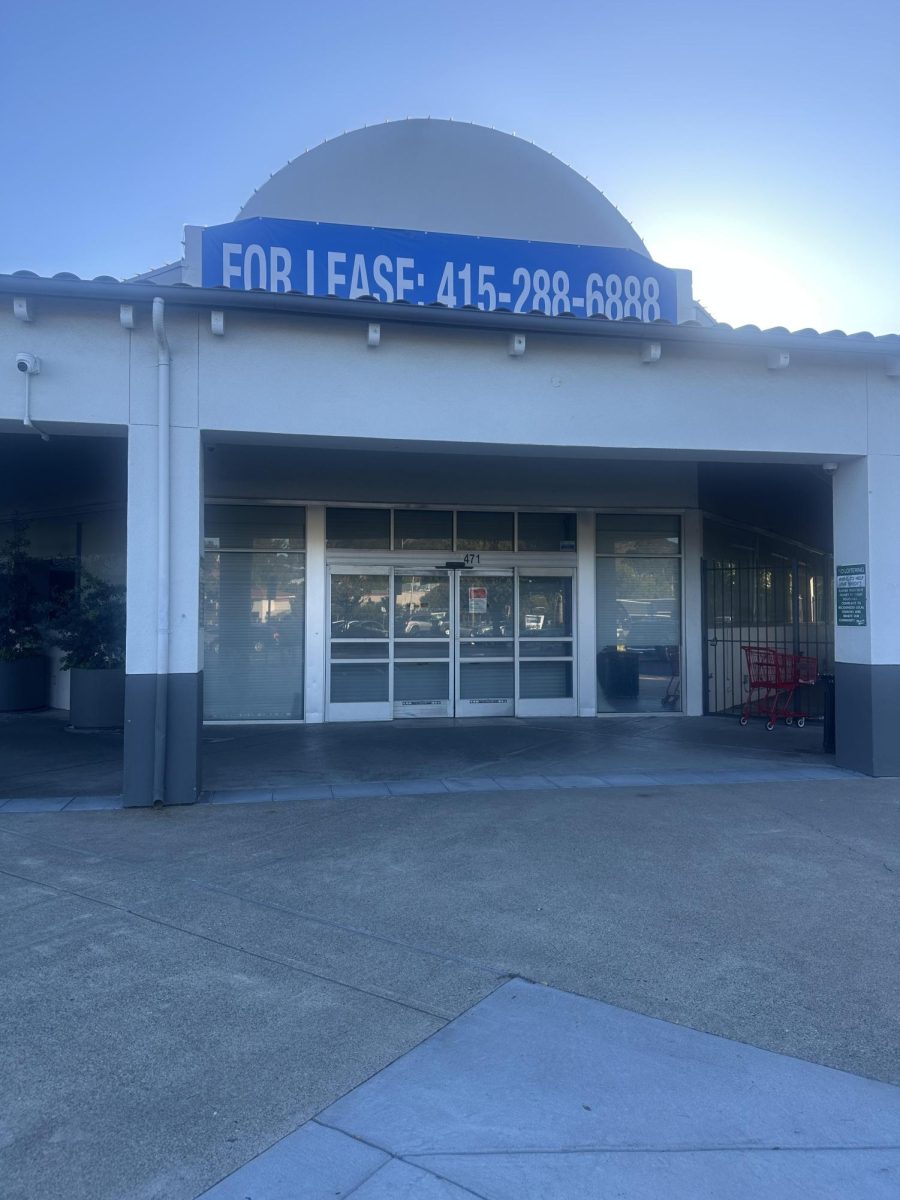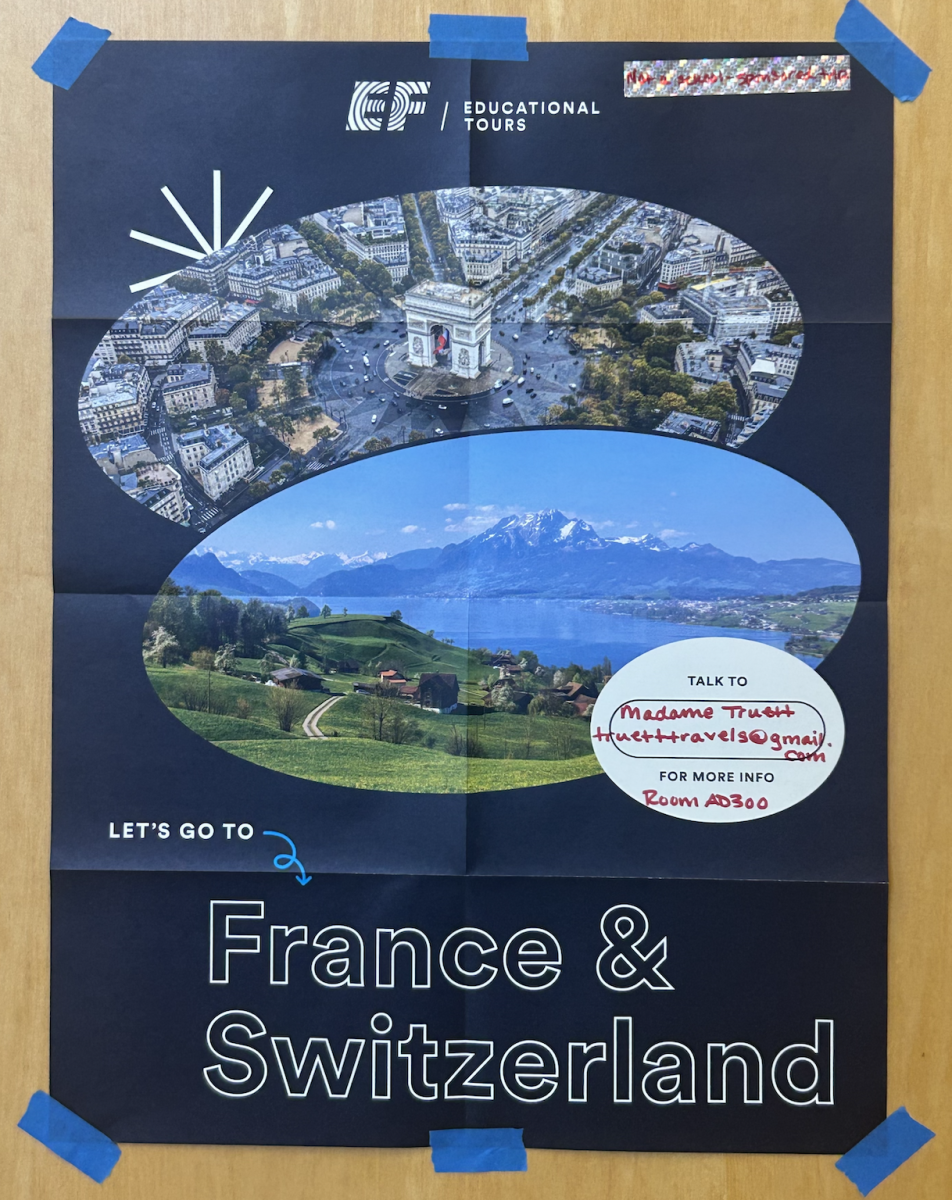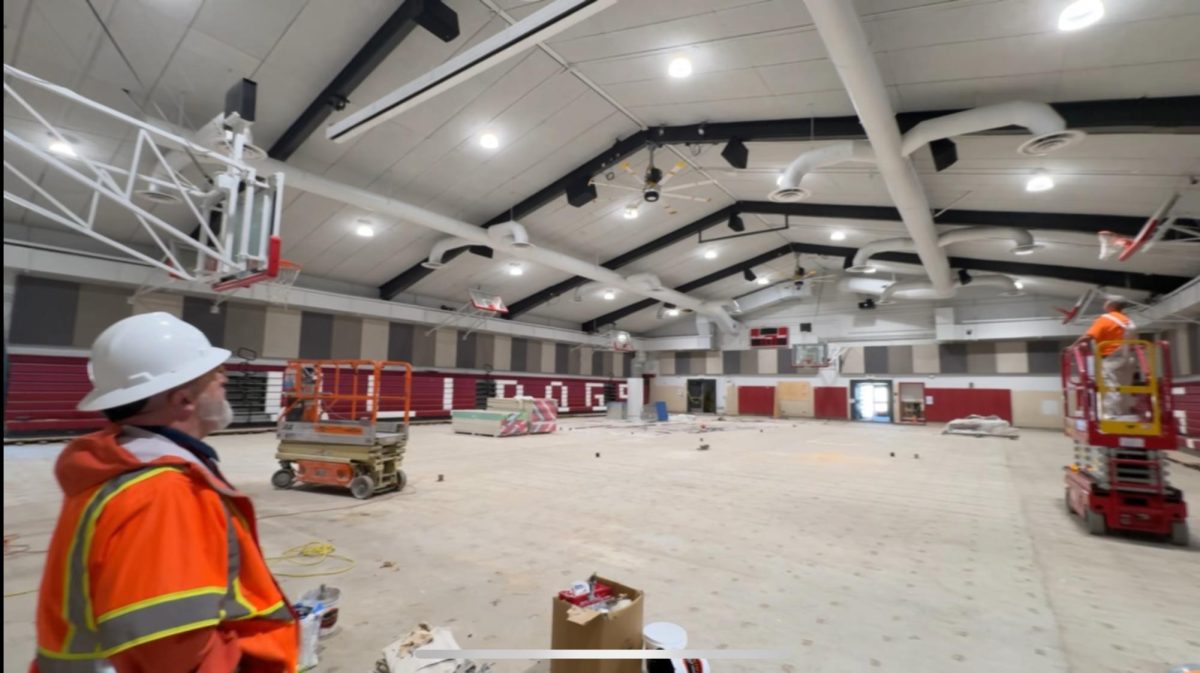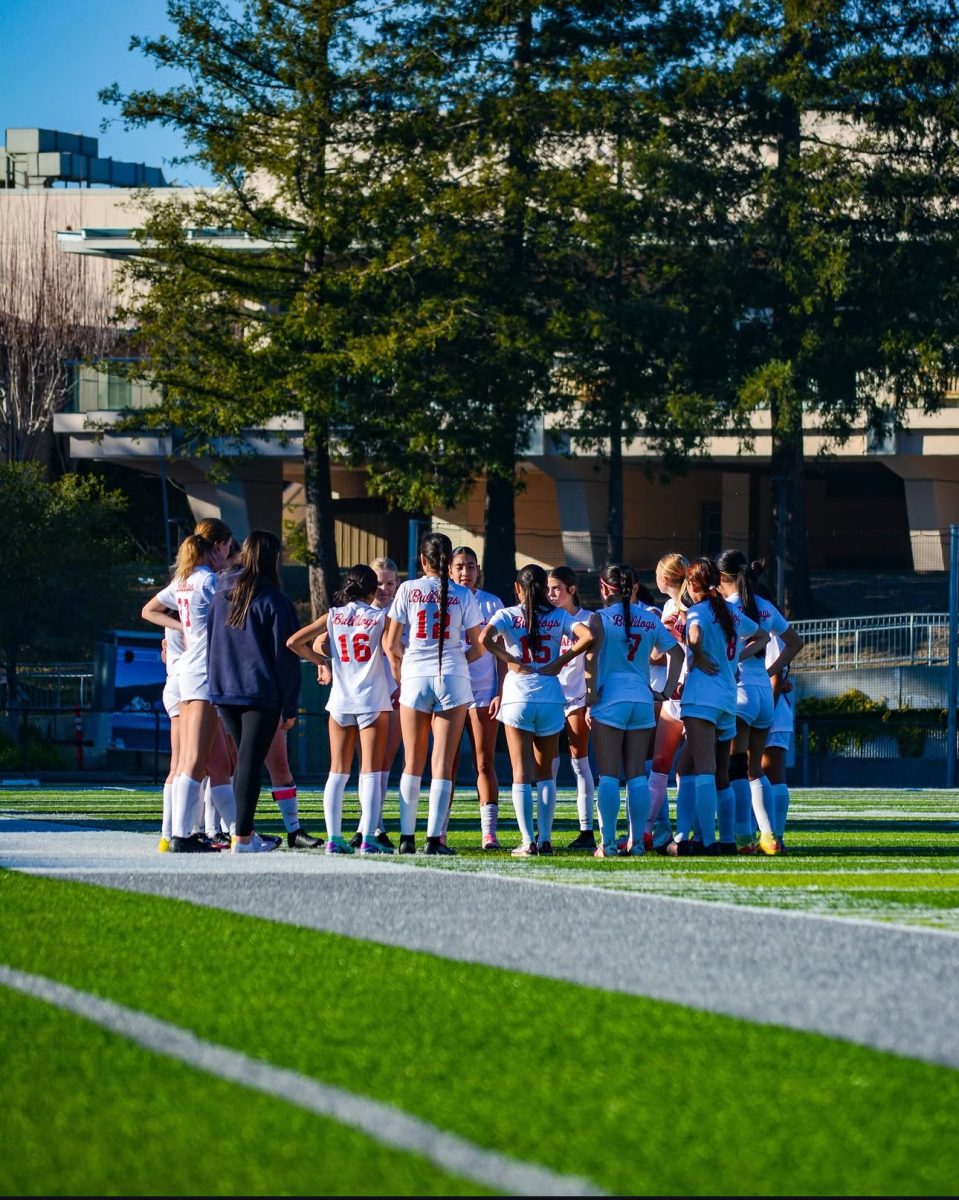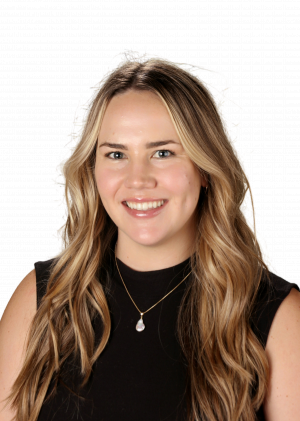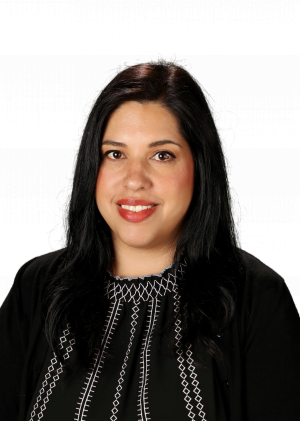The class, set up in rows of individual desks facing the front, was filled with students chatting with their neighboring classmates. There was an energy to the room, filling it with a sense of intrigued excitement. A younger woman with brown hair and blonde highlights, green/hazel eyes, and dimples, who was previously sitting at her desk in the front of the class, stood up. She introduced the class in fluent Spanish, and began a video, also in Spanish, about the U.S presidents.
Ms. Royle is returning for her second year teaching history here at San Rafael High School. Although she is not an SR alumni, she has deep roots in the SR community. Ms. Royle grew up in Santa Venetia, went to Venetia Valley, Davidson, Terra Linda High School, and later graduated from Cal Poly. Her first Spanish teacher was even Ms. Truett.
Royle teaches a wide variety of classes and students, from newcomers who just arrived in the United States to students taking AP classes, most of whom are applying to four year universities. “I like the classes I teach now because I feel like I see a lot of parts of San Rafael’s population,” she said.
“At SR we have a high newcomer population, and a lot of times it’s hard for these students to go into a normal ethnic studies class or a normal world history class because they don’t speak English,” Ms. Royle said. “So we developed a class for them with Spanish-based content in order to help them make the transition easier.” Her class of 26 newcomers is learning almost the same content a regular ethnic studies class would, but the semester-long course is taught in Spanish. “I appreciate teaching that population,” said Ms. Royle, “I learned so much about them, and they’re really respectful and kind kids.”
After talking to some of her AP U.S History students, most of them had no idea that she even speaks Spanish. A current AP U.S History student of Ms. Royle’s, Audrey Merk, says “I did not know that!” when being asked if she was aware Ms. Royle was fluent in Spanish.
Ms. Royle also has a passion for teaching her more advanced classes. “This year I’d say I’m definitely enjoying teaching APUSH (AP U.S History) a lot more, just because I know what I’m doing,” said Royle. Last year was her first year teaching AP U.S History, yet her students still speak very highly of her teaching. Haden Berlinsky, a prior student of Ms. Royle’s and senior at SRHS said in an interview, “I thought Ms. Royle was a very nice and relatable teacher who was successful in teaching us in her first year of AP US History. I think she prepared us well for the AP test as I got a 4.”
Ms. Royle recounts her time teaching US history SDAIE, two summers ago, where the program was held at SR due to extra money being in the budget. “We went on a field trip every single week during the summer. We went to Angel Island, the Academy of Sciences, and we even went to just the farmers market,” she said.
“I think just going with those kids to those new experiences, it was their first time experiencing all these new places and it was so fun for me, we had a great time and it was a great summer job,” said Ms. Royle.
Ms. Royle discussed different opinions at SR about what the goal is for our newcomers. She contemplated whether the goal is for them to be able to speak English as quickly as possible, or for them to continue developing their academic skills in the content that the school teaches. Ms. Royle said, “I guess this class answers more to the second objective, and eventually we’ll start moving where we use English and ELD strategies to help develop their English.”
In our interview, Ms. Royle went into depth about her time studying abroad and when she started her teaching journey. “I didn’t know what I wanted to do,” said Royle. She had just returned from Madrid and was graduating from Cal Poly when COVID hit. “I didn’t know that I wanted to be a teacher till a few years ago, but, right when COVID hit, I decided to get my teaching credentials,” said Ms. Royle.
Before Ms. Royle graduated from Cal Poly in 2019, she went back to Madrid for another 8 months. “I went back to Madrid and I started teaching English there. They have this program where you can be an English teacher or an English language assistant and work in a public school and you just talk to kids in English,” said Royle, “They give you a stipend and you live on like a thousand euros a month, so you’re kind of living like a student still. So that’s what I did.”
When she returned to the United States with credentials as a teaching assistant in Spain, Ms. Royle started a job as a teaching assistant at Side-by-Side, a school for students who have trouble being in a normal middle school classroom. Her class consisted of ten or so ten and eleven year old boys. Reflecting back on what sparked her passion for teaching, she noted, “I worked as a camp counselor for so many years, and I liked working in a community-focused environment. Working as an english assistant in a spanish elementary school was a lot of fun, and I knew I wanted to work in a classroom, however, not as an elementary school teacher, but middle school or highschool. I was attracted to having a meaningful career, and having autonomy.”
Ms. Royle wanted to make it clear that she doesn’t have any Spanish teaching credentials, but in 2022 she did get hired to teach the bilingual ethnic studies class. She originally started teaching in the Bridge Program, classes like US History SDAIE for 16, 17, 18, and 19 year old newcomers. Then, she was hired to teach Bilingual Ethnic Studies as of last year.
Although she grew up going to a majority Latino school, Venetia Valley, she didn’t really start taking Spanish classes until she was 14, besides one bilingual program. But, she took Spanish all four years of high school and continued into college, after her Spanish 4 teacher, Cristina Gonzales, recommended taking additional Spanish classes in college. “Because I had done so many classes in high school, there wouldn’t be many extra classes. I also always wanted to study abroad or live in Spain, and knowing Spanish makes it much more rewarding,” Ms. Royle said.
So, Royle decided to major in anthropology, the study of a human civilization and origins, and geography, as well as minoring in Spanish and geographic information. “It was really broad,” said Royle, “I thought I would get a job doing mapping, but when it came to it, I was like, I don’t actually want to just sit at a desk all day and do mapping.” So, she ended up testing into higher level Spanish classes at Cal Poly which allowed her to study abroad for a year in Madrid, Spain.
“I did a full year abroad in Madrid for advanced Spanish speakers. I took my content classes about anthropology, geography, and political science all centered around Spain and its history, all in Spanish,” said Ms.Royle, “So that was great for writing, reading, listening, and speaking and it’s such a good experience that I really encourage.” She recommends that everyone study abroad if they get a chance, not just in Europe, but all around the world.
“I also learned Spanish as a second language, so it’s helpful for me to have time each day that I practice it,” said Ms. Royle. Ms. Royle is currently doing a master’s in Grenada, Spain during her summers in teaching and learning Spanish. It might help her get a dual language teaching degree, but it also helps her get paid more as a teacher at SR.

